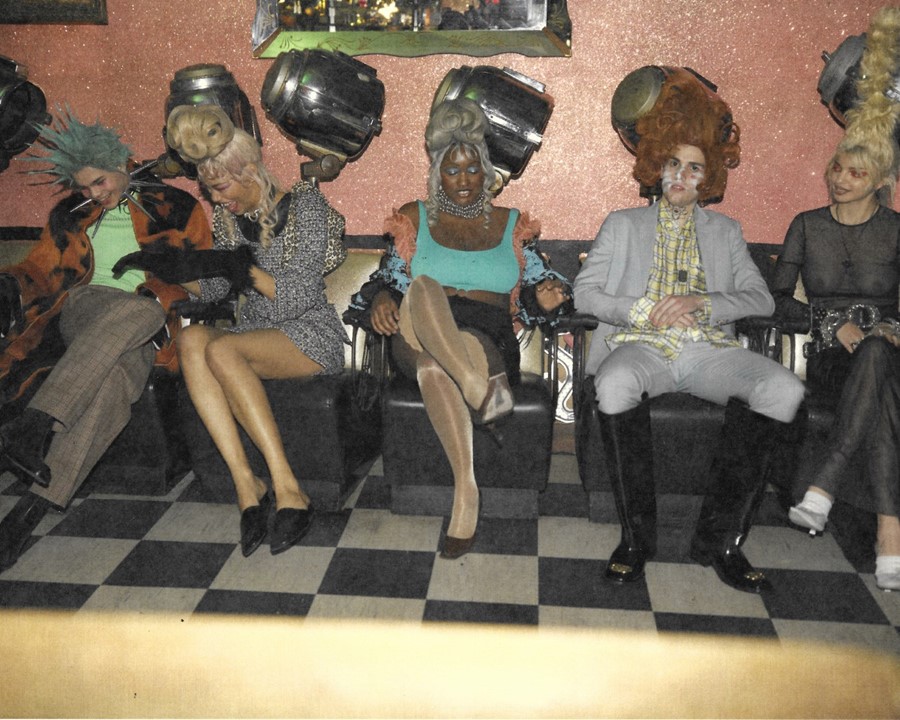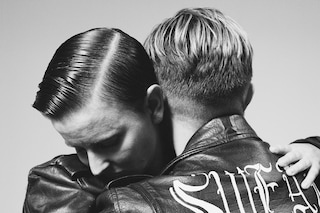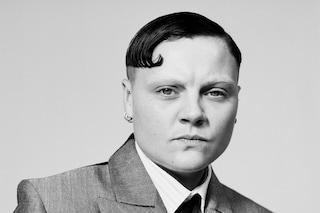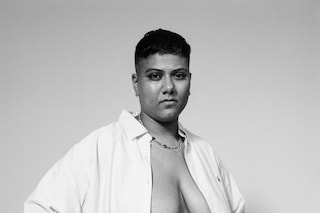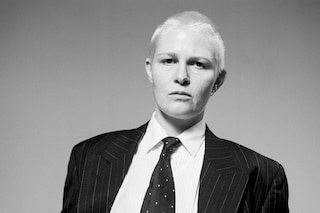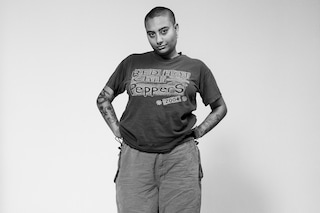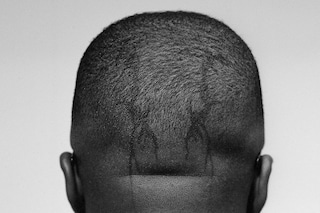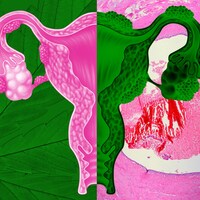Not just for haircuts, a rising number of queer salons are offering safe spaces for people to figure out their identity and what it might look like
As any queer person who’s lived through the reign of the undercut – basically the handkerchief code distilled into a single half-shaved hairdo, as beloved by 2010s lesbians – knows, hair is so much more than just dead bits of keratin. It’s a source of pride, a form of self-fashioning and a way to signify your identity to others.
For this reason, it can feel like traditional hair care spaces can be less than welcoming to those under the LGBTQ+ umbrella. Divided strictly into male barber spaces and female hair salon spaces, the world of hair care has traditionally been ruled by explicit gender norms which can create an uncomfortably cis-heteronormative atmosphere. And while researching this piece, I found plenty of stories from trans, non-binary and gender non-conforming people whose experiences backed this up.
“Trying to get a gender-affirming cut from a normal place can be nerve-racking, to say the least,” says non-binary 25-year-old Jei. “I have been turned away from men’s barber shops and had feminised versions of masculine cuts I wanted from a female barber.” But even in one of the rare instances where they were served and given their requested cut, Jei felt far from comfortable. “I felt incredibly nervous, seeing as I was the only non-man in the shop at the time,” he recalls. “I felt the stares of others wondering why I was there, and wanted to leave the shop as soon as possible.”
It goes without saying that hair which aligns with your identity and signals to the world who you really are is a joy, so what’s the alternative, beyond learning to do your own DIY mullet at home? Well, organisations like Hair Has No Gender are working to make the established system better, raising awareness among barbers and hairdressers and providing education on gender-affirming haircuts. But there are a growing number of queer hairdressers who are bypassing the system altogether. Tired of cis-het norms in the hair care space, they’re creating their own non-judgemental spaces.
Run by non-binary barber Sam Rubinstein, Rooibos caters to “99.9 per cent queer clientele”. Rubinstein’s intentions for their clients go beyond just the aesthetic.“ Queer people deserve a place where they can fully express themselves, judgement-free, and leave with a hairstyle that affirms their true identity,” they say. The issues regarding LGBTQ+ inclusion in traditional salons and barbershops have deep roots, roots they have always tried to get away from.
“Classic hair education is still so heavily linked to gender and that tends to translate in the mainstream salons,” they say. This leads to internalised gender norms, which can then be projected onto queer clients: whether it’s offering unwanted opinions or providing a more diluted version of the identity-affirming look the person in their chair has asked for. To counteract these tendencies elsewhere, Rubinstein tries to listen closely to clients’ needs throughout the process. “It’s just me and you: no other stylists questioning or judging my client’s desired outcome,” they say. “It’s a collaboration.”
A common request at Rooibos is haircuts to help clients “look more queer”. Even ignoring the fact we can’t always trust a cis-het stylist not to subtly (or not-so-subtly) dissuade us from that course of action, a queer hairdresser will have better knowledge of what “queer hair” translates to IRL. Part of the appeal of heading to a queer hairdresser, then, is the existence of a shared shorthand and cultural context.
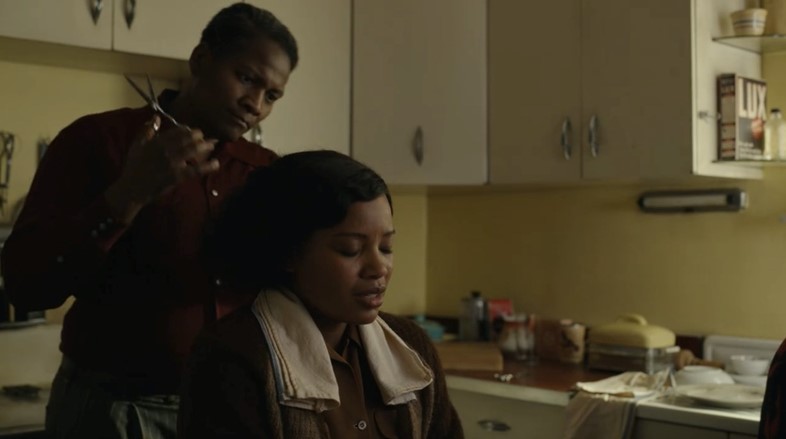
Such is the case for 26-year-old Nora who, rather than go to salons, prefers to have her hair cut informally in the houses of LGBTQ+ hairdressers. Looking back at her first queer-affirming haircut, courtesy of Jadah Dale (who is now a senior stylist at Bleach London Soho), Nora recalls that all she had to do was say the magic words “I want a dyke-y haircut” and the look was delivered. “I showed up at Trans Pride having cut most of my hair off and with a colourful fringe – everyone was complimenting me on my hair,” she recalls.
Since then, Nora has had her hair cut informally by friend, multidisciplinary artist and former salon stylist Jade O’Belle, who gave her the confidence to go “boy short” with her locks and embody a look that she’s traditionally found attractive in others but never felt she could pull off herself. “Queer hairstylists have changed my life and how I move through the world,” she says. “They gave me the confidence to match my outside with how I felt on the inside.”
The intimate sessions which Nora describes as part of her hair sessions – one-on-one and in a calm, welcoming space – is similar to the model used by multiple queer hairdressers, including Zara Toppin, who runs the hair studio Toppin’s in Shoreditch. From this sense of privacy, clients can develop real trust with their stylist. “The space is private and one-on-one, no one will feel judged by other people within the salon,” says Toppins.

A visit to a queer hairdresser is about so much more than a haircut; it’s about being able to be your most authentic self around people who see you as you really are. Understandably, then, queer salons and barbers can feel like an important community space, something which Toppins is keen to cultivate – hosting the exhibition Close Shave, of Lydia Garnett’s black and white photography, in October. Similarly, Rubinstein has previously hosted queer speed-dating events. When so many LGBTQ+ spaces come in the forms of clubs or bars, it’s important to have spaces or events that queer people can turn to during the day and feel connected to their identity without an atmosphere of drugs or alcohol – and queer salons do just this.
The power of queer hairdressers as spaces for community, where you can feel more at home in your identity and connect with like-minded people, is something which 31-year-old Martha can attest to. She first headed to Open Barbers in 2017, where they willingly obliged her request at the time to “look like Leonardo DiCaprio in Titanic,” and the affirming environment had her coming back for years. “It’s an amazing community space and it’s possible to meet friends,” she explains. “Open Barber isn’t a neutral replacement to a mainstream salon, it’s somewhere you can be yourself. There’s a respect for the role that hair can play in queer self-fashioning.”
Martha’s comment hits the nail on the head: queer salons and barbers aren’t just offering an LGBTQ+ version of what straight people can get. Instead, they create rare, queer-centred environments. They’re safe spaces for people figuring out their identity and what it might look like, who can trust that they’re in safe and affirming hands. And – perhaps most importantly – they’re a haven away from cis-het beauty standards and the straight gaze, where baby queer caterpillars can blossom into the butchest, campest or most fabulous of butterflies.
Not all people will have access to an LGBTQ+ hairdressers or barbers in their area. For advice on how to navigate a trip to the barbers or hairdressers as a trans, non-binary or gender-non-conforming person, consult charity Gendered Intelligence’s guide for practical tips and advice.
